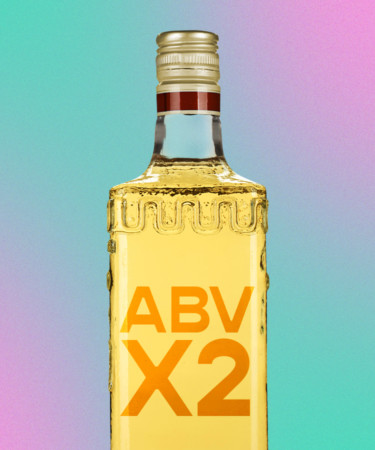While browsing the shelves of your local liquor store, you’ll likely encounter one of two methods used to measure how much alcohol content a bottle has. The first is alcohol by volume, or ABV, which is likely to be the measurement you’re most familiar with — it explicitly tells you the percentage of alcohol present in the liquid. The second method of measurement is the proof, which may be less widely understood than its counterpart, especially considering how much it varies from country to country.
In the United States, the proof measurement runs on a zero-to-200 scale, and an alcohol’s proof is exactly double its percentage of alcohol by volume. For example, if a vodka is labeled as 90 proof, it contains 45 percent alcohol by volume.
The proof method of labeling in the United States dates back to 1848, when 50 percent alcohol by volume was chosen by the U.S. government as the baseline, with 100 being used as its corresponding proof. For a liquor to be considered a “proof spirit,” it needs to be 100 proof, with an ABV of 50 percent or higher.
American drinkers may be in for a shock if they’ve recently purchased a spirit in France, where they’ll find that 45 proof liquor is much stronger than what they’ve come to expect at home. This is because in France, proof and spirit exist in a 1-to-1 ratio, with 100 percent ABV corresponding to 100 proof.
The term proof refers to a practice the British government undertook in the 1500s to determine how much alcohol was present in a given spirit. At the time, England had a “proof tax” in which liquors with high levels of alcohol would be taxed at a higher rate. In order to determine this alcohol level, the government would soak a gun pellet with liquor and then ignite the gunpowder; if alcohol content was high enough that the gunpowder went up in flames, the liquor was considered a “proof spirit.” Basically, the test was a method of proving high alcohol content in liquors, hence the term, proof.
In 1816, the British government did away with this method and introduced the Customs and Excise Act as a more scientific method of determining proof. The act states that for any liquor to be considered 100 proof, its weight must be twelve-thirteenths that of water at equal volume. This method was later standardized in 1952 with the ratio of proof to ABV being set at 4-to-7, meaning a 100 proof liquor is about 57 percent ABV. Luckily for Brits not looking to take a math exam to figure out how much alcohol is in their vodka, the country began to adopt the straight forward ABV system in 1980.
For now, as long as you stay stateside while exploring your next liquor store, you can count on proof being exactly double ABV.
